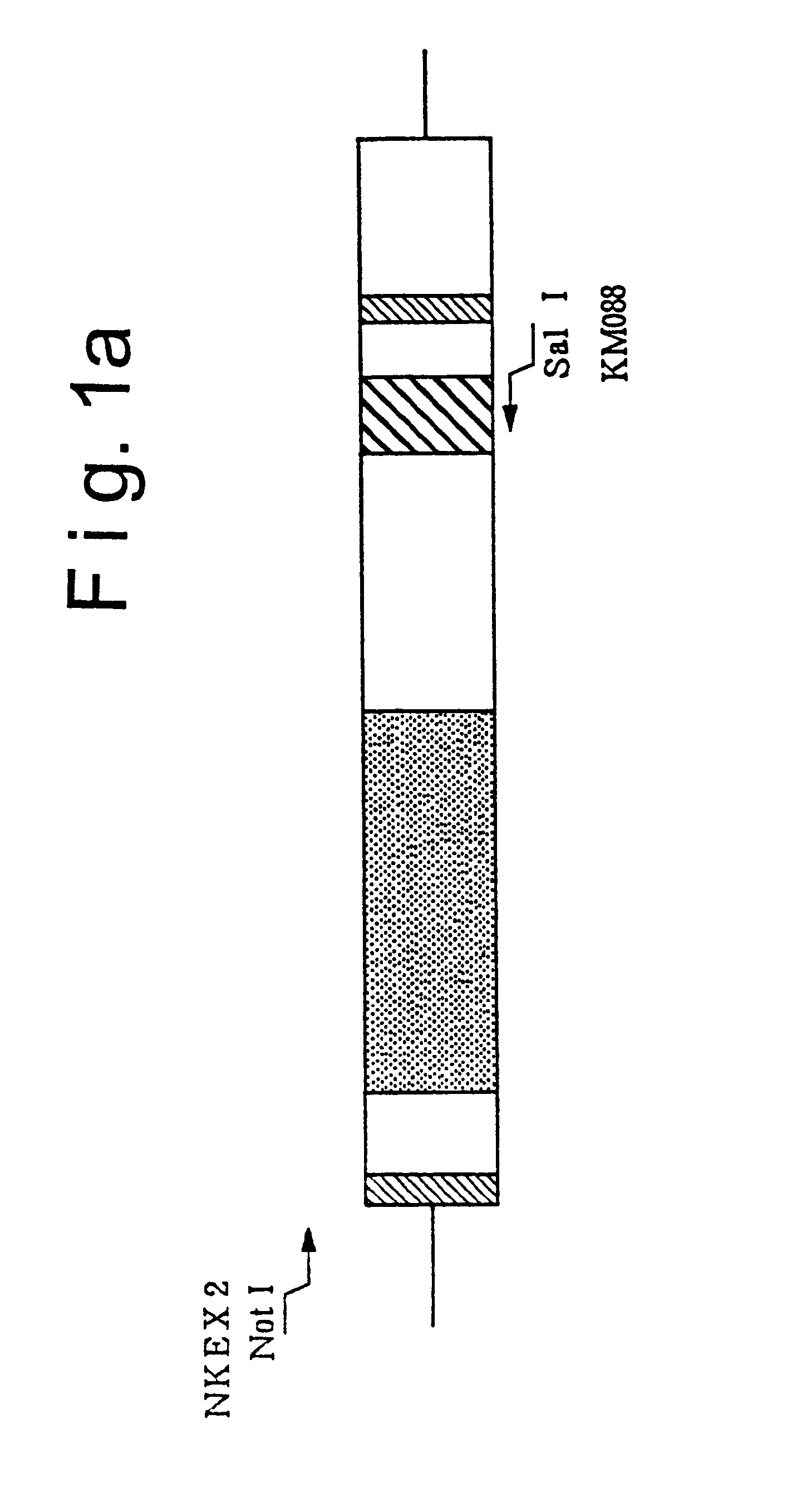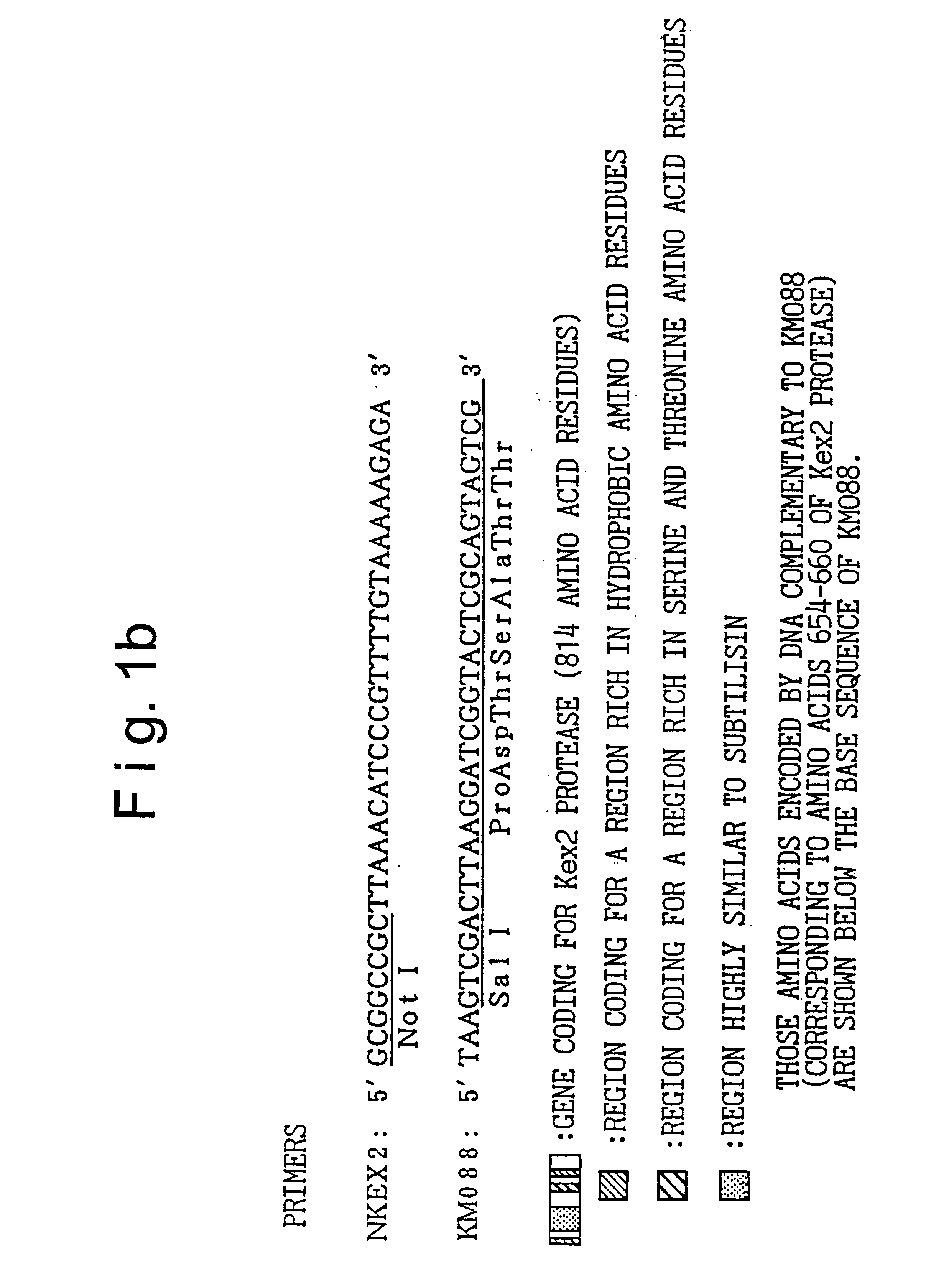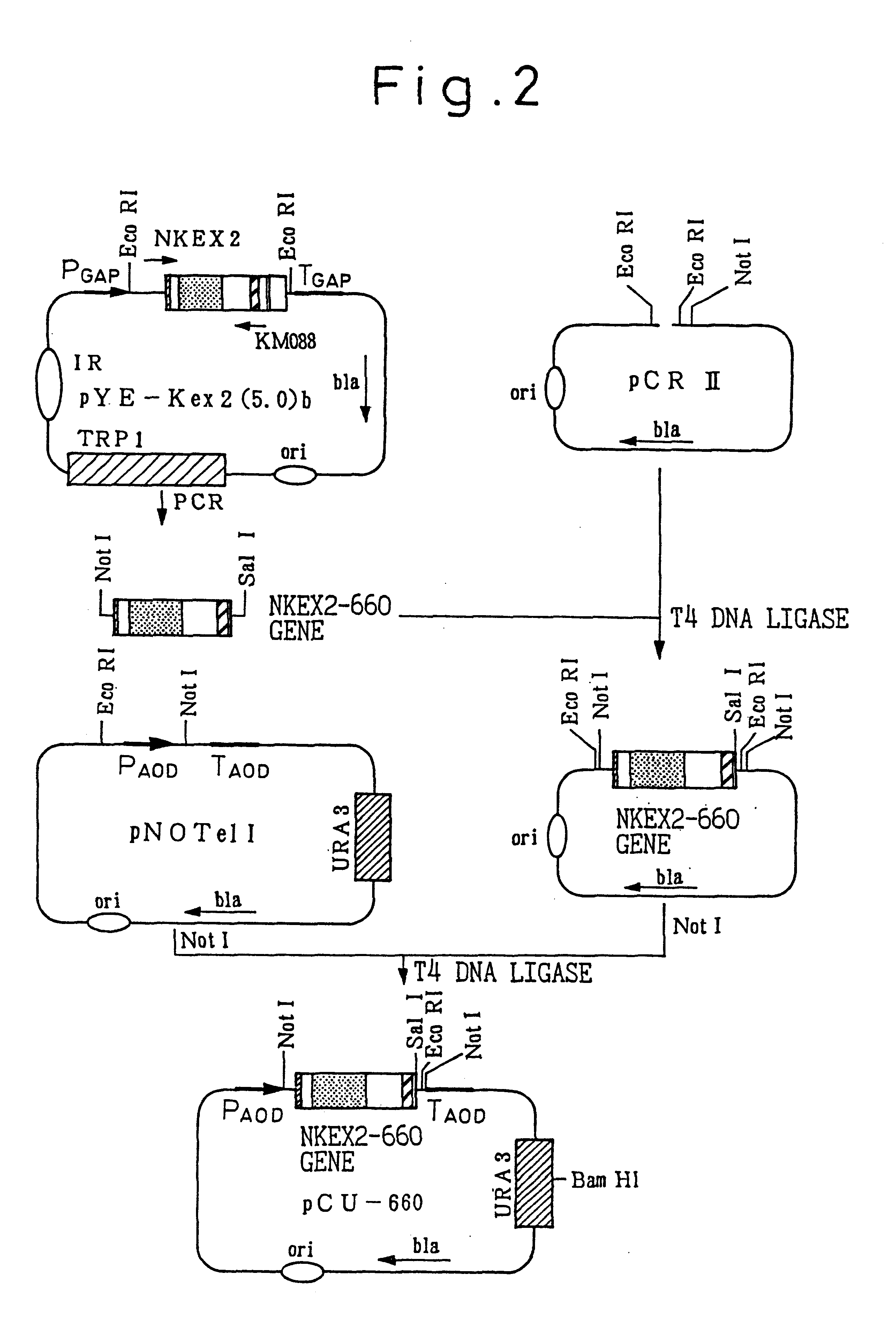Method for culturing microorganisms having a methanol metabolic pathway
- Summary
- Abstract
- Description
- Claims
- Application Information
AI Technical Summary
Benefits of technology
Problems solved by technology
Method used
Image
Examples
example 1
on of NKEX2-660 Gene and Expression Vector pCU660
A gene (NKEX2-660 gene) coding for secretory Kex2 derivative Kex2-660 (protein consisting of the amino acids from the N terminal to the 660th amino acid of Kex2 endoprotease), and NKEX2-660 expression vector pCU660 were prepared in the manner described below.
1) Preparation of NKEX2-660 Gene (see FIG. 1)
A DNA fragment containing the NKEX2-660 gene was prepared by PCR using plasmid pYE-KEX2(5.0)b, cleaved with restriction enzyme Eco RI and formed into a straight chain (Mizuno et al., Biochem. Biophys. Res. Commun. 156, 246-254, 1988), for the template and using NKEX2 (SEQ ID NO.: 1) and KM088 (SEQ ID NO.: 2) for the primers.
NKEX2 and KM088 correspond to the KEX2 gene regions shown in FIG. 1(a), NKEX2 contains a sequence corresponding to 107 to 132 nucleotides upstream from the starting methionine codon of the KEX2 gene, and KM088 has a nucleotide sequence complementary to the nucleotide sequence resulting from addition of a translation ...
example 2
of Transformant and Kex2-Producing Strain
Plasmid pCU660 cleaved with restriction enzyme Bam HI and formed into a straight chain was introduced into uracil-requiring strain TK62, and chromosome-inserting recombinant strain TK62 (pCU660) was selected by using the complementarity of the uracil requirement. Strain TK62 is a uracil-requiring strain produced by URA3 mutation that is derived from Candida boidinii strain S2 AOU-1, and the transformation method of strain TK62 has been reported by Sakai, et al. (Sakai, Y. et al., J. Bacteriol., 173, 7458-7463, 1991). Strain S2 AOU-1 has been named Candida boidinii SAM1958, and was deposited in Institute of Bioengineering and Human Technology Agency of Industrial Science and Technology on February 25, 1992 as FERM BP-3766).
pCU660 is a chromosome-inserting expression vector, and for the resulting transformant TK62 (pCU660) the amount of Kex2 derivative expressed and the amount secreted may be different according to the chromosome insertion site...
example 3
f Culturing Conditions (see FIG. 3)
1) Basic Culturing Conditions
Preculture was performed by inoculating 1 ml of strain TK62 (pCU660) #10 from glycerol frozen stock into a 300 ml Erlenmeyer flask containing 25 ml of YPD medium (1% (w / v) yeast extract, 2% (w / v) peptone, 2% (w / v) glucose) and shake culturing for 16 hours at 27.degree. C.
Main culturing was performed by inoculating the above-mentioned precultures into 2 liters of culture medium (1.5% (v / v) methanol, 3% (w / v) glycerol, 1% (w / v) yeast extract, 2% (w / v) peptone, 50 mM potassium phosphate (pH 6.0) and 1.34% (w / v) YNB wo AA) so that the cell density at the start of culturing was OD600=0.2, and stirring while aerating at 27.degree. C. using a 5 liter volume fermenter (Mitsuwa Scientific Instruments, Model KMJ-5B-4U-FP). The aeration rate was set at 4 L / min, and the stirring rate was controlled so that the amount of dissolved oxygen did not fall below 2.5 ppm. The nitrogen of the culture was suitably replenished with 80 ml of n...
PUM
| Property | Measurement | Unit |
|---|---|---|
| Fraction | aaaaa | aaaaa |
| Density | aaaaa | aaaaa |
| Water holding capacity | aaaaa | aaaaa |
Abstract
Description
Claims
Application Information
 Login to View More
Login to View More - R&D
- Intellectual Property
- Life Sciences
- Materials
- Tech Scout
- Unparalleled Data Quality
- Higher Quality Content
- 60% Fewer Hallucinations
Browse by: Latest US Patents, China's latest patents, Technical Efficacy Thesaurus, Application Domain, Technology Topic, Popular Technical Reports.
© 2025 PatSnap. All rights reserved.Legal|Privacy policy|Modern Slavery Act Transparency Statement|Sitemap|About US| Contact US: help@patsnap.com



